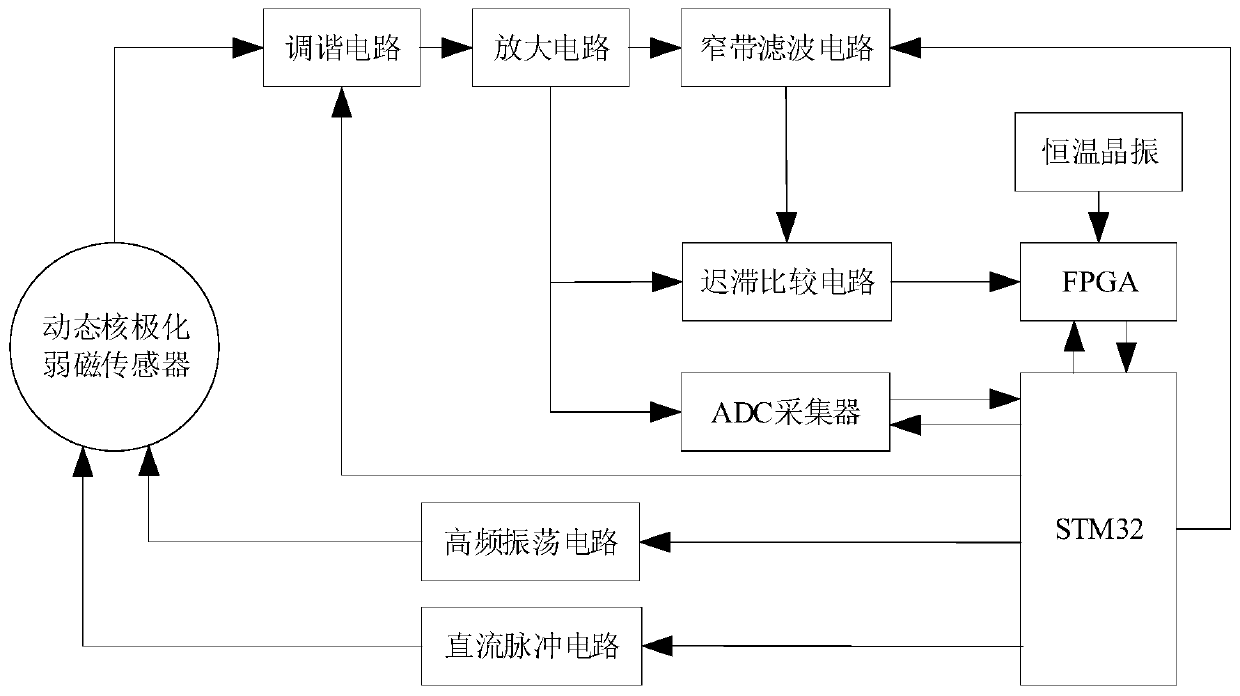System and method for improving tuning precision and signal-to-noise ratios of proton precession type sensors
A proton precession and sensor technology, used in radio wave measurement systems, instruments, scientific instruments, etc., can solve problems such as weak FID signals, spectrum analysis errors, and instruments that cannot work normally, so as to reduce the cost of transformation and overcome the slow tuning speed. Effect
- Summary
- Abstract
- Description
- Claims
- Application Information
AI Technical Summary
Problems solved by technology
Method used
Image
Examples
Embodiment Construction
[0044] In order to have a clearer understanding of the technical features, purposes and effects of the present invention, the specific implementation manners of the present invention will now be described in detail with reference to the accompanying drawings.
[0045] Systems to improve the tuning accuracy and signal-to-noise ratio of proton precession sensors, such as figure 1 As shown, including dynamic nuclear polarization weak magnetic sensor, high frequency oscillation circuit, DC pulse circuit, tuning circuit, amplifier circuit, narrowband filter circuit, hysteresis comparison circuit, ADC collector (Analog-to-Digital Converter), constant temperature crystal oscillator, FPGA digital frequency measurement module (Field Programmable Gate Array, Field Programmable Gate Array), STM32; high frequency oscillation circuit and DC pulse circuit together form an excitation circuit.
[0046] The dynamic nuclear polarization sensor receives the excitation signal of the high-frequenc...
PUM
 Login to View More
Login to View More Abstract
Description
Claims
Application Information
 Login to View More
Login to View More - R&D
- Intellectual Property
- Life Sciences
- Materials
- Tech Scout
- Unparalleled Data Quality
- Higher Quality Content
- 60% Fewer Hallucinations
Browse by: Latest US Patents, China's latest patents, Technical Efficacy Thesaurus, Application Domain, Technology Topic, Popular Technical Reports.
© 2025 PatSnap. All rights reserved.Legal|Privacy policy|Modern Slavery Act Transparency Statement|Sitemap|About US| Contact US: help@patsnap.com



